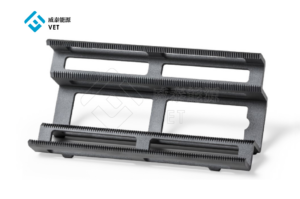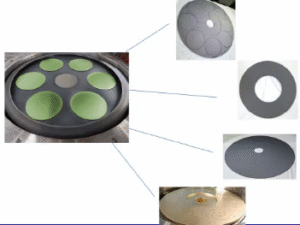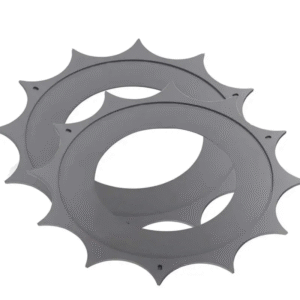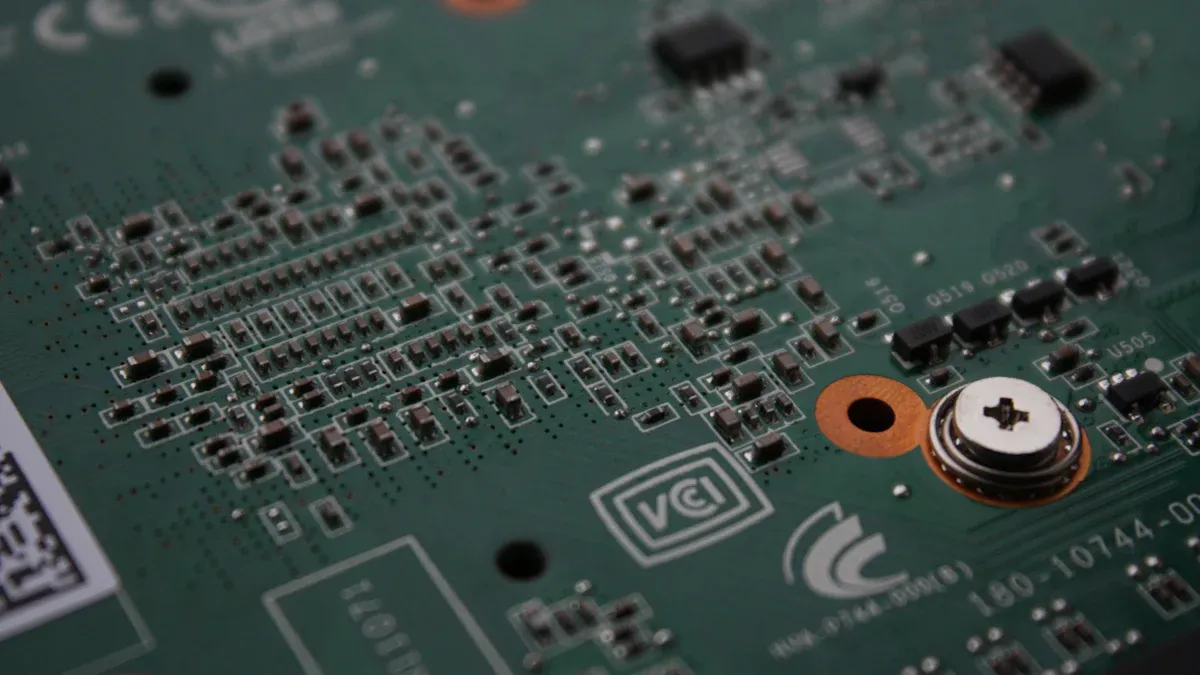
Graphite semiconductor components are revolutionizing power electronics by addressing critical challenges in efficiency, reliability, and device miniaturization. Their exceptional thermal management capabilities make them indispensable for electric vehicle batteries and motors. The electric vehicle market, growing at 50% annually, drives a surging demand for graphite, vital for lithium-ion batteries. Additionally, graphite supports energy storage in renewable systems and portable electronics, enabling sustainable technologies across industries.
Traits clés
- Graphite parts improve how power electronics work, making them key for electric cars and green energy systems.
- They carry heat and electricity well, cutting energy waste and helping make smaller, energy-saving devices.
- Graphite is light and strong, so it can be used in many industries, helping create eco-friendly technology.
Unique Properties of Graphite Semiconductor Components
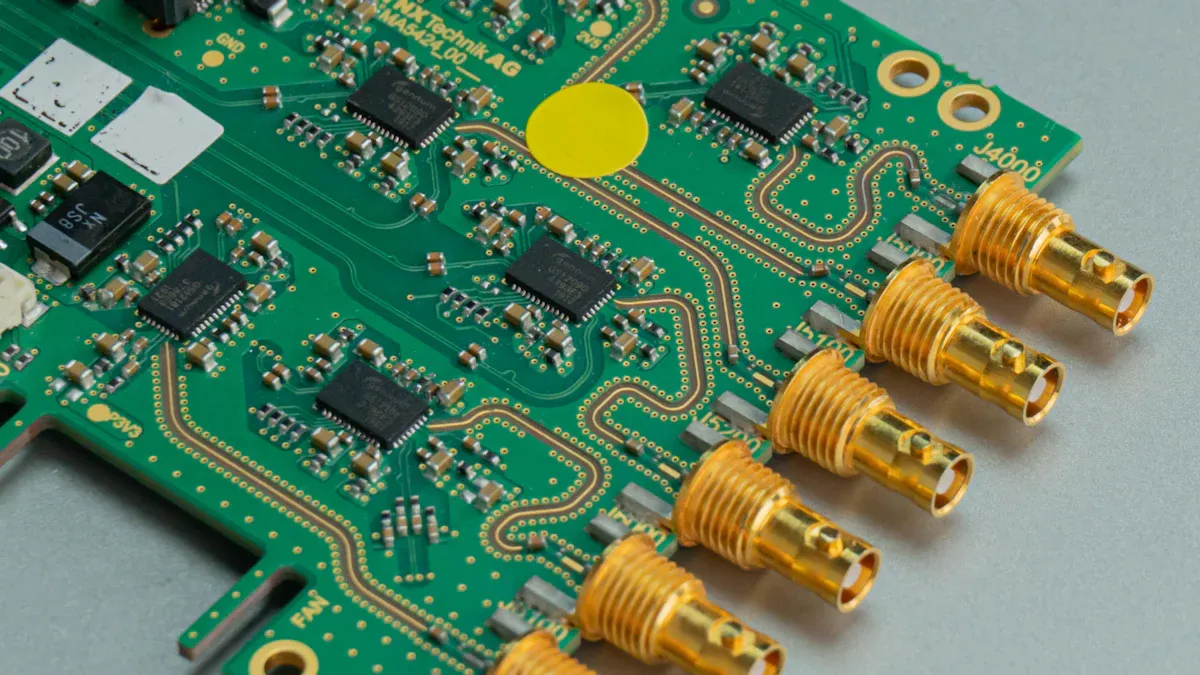
Exceptional Thermal Conductivity for Heat Management
Graphite semiconductor components excel in thermal conductivity, making them ideal for managing heat in high-performance electronics. Their ability to dissipate heat efficiently ensures that devices operate within safe temperature ranges, enhancing reliability and longevity. Recent advancements in measurement techniques have validated graphite’s superior thermal properties.
- A new method accurately characterizes in-plane thermal conductivity, crucial for evaluating graphite’s performance.
- Experimental results confirm its effectiveness across a wide range of thermal conductivities, from 0.1 to 2000 W/(m·K), and anisotropy ratios up to 100.
- Advanced fitting methods improve signal-to-noise ratios, addressing challenges in measuring high-conductivity materials like graphite.
These findings underscore graphite’s role in optimizing thermal management, particularly in applications like electric vehicles and renewable energy systems, where heat dissipation is critical.
High Electrical Performance for Enhanced Efficiency
Graphite semiconductor components deliver exceptional electrical performance, enabling efficient energy transfer in power electronics. Their high electrical conductivity minimizes energy losses, making them indispensable in systems requiring precise power management. This property supports the development of compact, energy-efficient devices, aligning with the growing demand for sustainable technologies. By integrating graphite into semiconductor designs, engineers can achieve higher efficiency levels while reducing the overall energy footprint of electronic systems.
Lightweight and Mechanical Stability for Versatile Applications
Graphite’s lightweight nature and mechanical stability make it a versatile material for various industries. Its unique combination of properties allows it to perform reliably under extreme conditions. Engineering analyses highlight its adaptability across multiple application areas:
| Domaine d'application | Properties of Graphite Components |
|---|---|
| Process Technology | Tailor-made solutions for high demands in mechanical engineering. |
| High-Temperature Processes | Lightweight and stable under extreme conditions. |
| Civil Engineering | Offers mechanical stability in structural applications. |
| Medical Technology | Lightweight components for medical devices. |
| Sports | Utilizes graphite for performance-enhancing equipment. |
Additionally, graphite exhibits high compressive strength, excellent thermal shock resistance, and corrosion resistance to acids and solvents. These attributes ensure its stability and durability, even in demanding environments.
Environmental and Cost Advantages of Graphite
Graphite semiconductor components offer significant environmental and cost benefits. As a naturally abundant material, graphite reduces dependency on rare and expensive resources. Its recyclability further enhances its sustainability profile, aligning with global efforts to minimize electronic waste. Moreover, the cost-effectiveness of graphite makes it an attractive choice for manufacturers seeking to balance performance and affordability. By leveraging graphite, industries can achieve both economic and environmental goals, driving innovation in power electronics.
Applications of Graphite Semiconductor Components in Power Electronics
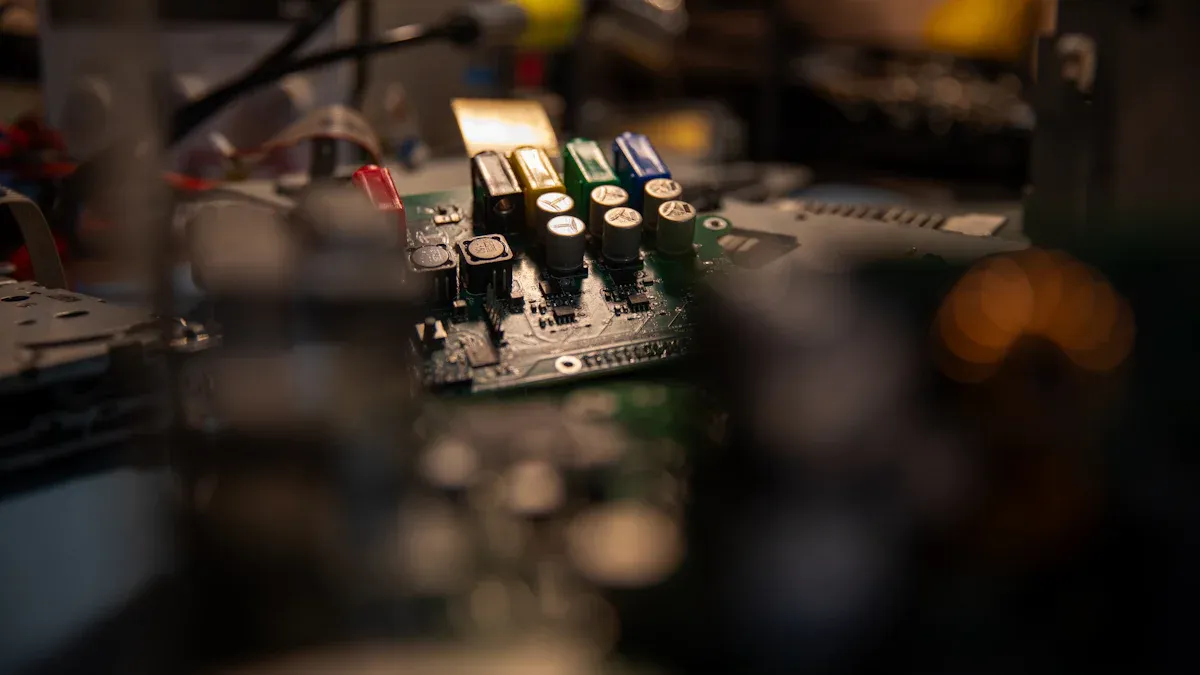
Boosting Efficiency in Power Conversion Systems
Graphite semiconductor components play a pivotal role in enhancing the efficiency of power conversion systems. Their high electrical conductivity minimizes energy losses during power transfer, ensuring optimal performance. In systems like inverters and converters, graphite’s superior thermal management capabilities prevent overheating, which can compromise efficiency. By maintaining stable operating temperatures, these components extend the lifespan of power electronics and reduce maintenance costs. Industries such as automotive and renewable energy rely on these benefits to meet the growing demand for energy-efficient solutions.
Enabling Miniaturization of Advanced Electronic Devices
The trend toward smaller, more powerful electronic devices has accelerated the adoption of graphite semiconductor components. Pyrolytic carbon graphite, known for its exceptional electrical conductivity, supports the efficient operation of compact electronic components. Its thermal management properties enable effective heat dissipation, a critical factor in miniaturized devices. Additionally, graphite’s application in semiconductors and heat sinks facilitates the development of smaller, high-performance devices. These advancements align with the industry’s push for portable and space-saving technologies, making graphite indispensable in modern electronics.
- Key performance metrics of graphite in miniaturization include:
- Exceptional electrical conductivity for efficient energy transfer.
- Advanced thermal management to maintain performance in compact designs.
- Versatility in semiconductors and heat sinks for smaller, more powerful devices.
Enhancing Reliability and Thermal Management in High-Performance Systems
High-performance systems demand materials that can withstand extreme conditions without compromising reliability. Graphite semiconductor components excel in this regard by offering superior thermal management and mechanical stability. Few-layer graphene (FLG) and graphite quilts, for instance, have demonstrated significant improvements in thermal performance. In AlGaN/GaN high-power transistors, these materials reduced hotspot temperatures by approximately 20 °C, extending device lifetimes. Simulations further revealed that FLG heat spreaders limited temperature increases to only 10 °C, outperforming traditional metal heat spreaders. These advancements highlight graphite’s critical role in ensuring the reliability of high-performance systems.
Key Applications in Electric Vehicles and Renewable Energy Technologies
Graphite semiconductor components have become essential in electric vehicles (EVs) and renewable energy technologies. In EV batteries, graphite accounted for about 55% of total consumption in 2023, underscoring its importance in energy storage. The global demand for natural graphite is projected to reach 1.2 million metric tons, driven by its role in sustainable energy solutions. Graphite also supports renewable energy systems by enhancing the efficiency of energy storage and conversion technologies.
| Demande | Principales perspectives |
|---|---|
| Electric Vehicle Batteries | Accounted for about 55% of total graphite consumption in 2023. |
| Battery Industry Demand | Global demand for natural graphite expected to reach 1.2 million metric tons. |
| Solutions pour les énergies renouvelables | Significant role in energy storage solutions, indicating a shift towards sustainability. |
Beyond EVs and renewable energy, graphite finds applications in refractories, foundries, friction products, and lubricants. Its versatility and performance make it a cornerstone of modern power electronics, driving innovation across multiple industries.
Manufacturing Processes and Challenges in Graphite Semiconductors
Overview of Graphite Semiconductor Fabrication Techniques
Fabricating graphite semiconductor components involves advanced methodologies designed to optimize material properties for power electronics. Techniques such as chemical vapor deposition (CVD) and mechanical exfoliation are widely used to produce high-quality graphite layers. CVD enables precise control over layer thickness and uniformity, making it ideal for applications requiring consistent performance. Mechanical exfoliation, on the other hand, extracts thin graphite layers from bulk material, ensuring high purity and structural integrity. These methods provide the foundation for creating components that meet the stringent demands of modern electronics.
Addressing Challenges in Scaling Production
Scaling the production of graphite semiconductors presents several challenges. Current synthesis methods often struggle to maintain quality during large-scale manufacturing. Compatibility issues with existing silicon-based technologies further complicate integration. Additionally, high production costs and environmental concerns hinder widespread adoption.
| Défi | Désignation des marchandises | Potential Solutions |
|---|---|---|
| Synthesis Methods | Methods like CVD face scalability issues, particularly in transferring materials without quality loss. | Innovations in CVD processes to optimize growth conditions and reduce defects. |
| Integration into Existing Technologies | Compatibility issues with silicon-based electronics require additional manufacturing steps. | Engineering solutions to preserve graphene’s properties during integration. |
| Cost Barriers | High production costs driven by raw material and energy-intensive processes limit adoption. | Research into economical production methods while maintaining quality. |
| Environmental Considerations | Hazardous chemicals and waste from synthesis techniques raise sustainability concerns. | Development of eco-friendly synthesis methods to minimize environmental impact. |
Ensuring Material Purity and Consistency
Maintaining material purity and consistency is critical for graphite semiconductor applications. High-purity graphite components must meet stringent standards, including ash content below 5 ppm, to prevent contamination. Compliance with SEMI standards ensures consistent performance under extreme conditions, while ISO certifications like ISO 9001 and ISO 14001 enforce rigorous quality and environmental controls. Advanced techniques such as CVD coating and non-destructive testing, including X-ray diffraction analyzers, validate material quality and dimensional tolerances. These methodologies guarantee the reliability of graphite components in demanding environments.
Innovations Driving Manufacturing Efficiency
Innovations in manufacturing processes continue to enhance the efficiency of graphite semiconductor production. Automated systems now streamline CVD processes, reducing defects and improving scalability. Eco-friendly synthesis methods address environmental concerns by minimizing hazardous waste. Companies like Ningbo VET Energy Technology Co., Ltd are pioneering advancements in purification techniques, ensuring high-quality graphite components at competitive costs. These innovations not only improve production efficiency but also support the growing demand for sustainable and reliable power electronics.
Industry Insights and Expert Perspectives on Graphite Semiconductors
Insights from Semiconductor Manufacturers and Engineers
Semiconductor manufacturers and engineers emphasize the transformative potential of graphite components in power electronics. They highlight graphite’s superior thermal conductivity and electrical performance as critical factors in improving device efficiency and reliability. Engineers also note its lightweight nature, which simplifies integration into compact designs. These properties make graphite an ideal material for next-generation technologies, including electric vehicles and renewable energy systems. Industry experts predict that ongoing advancements in graphite fabrication techniques will further enhance its adoption across various applications.
Market Trends and Adoption of Graphite Semiconductor Components
The market for graphite semiconductor components is experiencing rapid growth, driven by technological advancements and sustainability goals. Key trends include:
- The rise of 5G, IoT, and AI technologies, which demand high-performance materials like graphite.
- Increased investments in semiconductor fabrication plants, particularly in China and the U.S.
- A growing focus on energy-efficient solutions, where graphite’s durability and cost-effectiveness stand out.
- Asia Pacific leading the market, with North America and Europe also showing significant growth.
The graphite semiconductor market, valued at USD 2.5 billion in 2024, is projected to reach USD 4.8 billion by 2033, growing at a CAGR of 7.8%. This growth outpaces the conventional semiconductor market, which is expected to grow at a slower CAGR of 5.4%.
Case Studies Highlighting Successful Implementations
Case studies reveal the successful integration of graphite components in various industries. For example, electric vehicle manufacturers have utilized graphite to enhance battery performance and thermal management. Renewable energy companies have adopted graphite in energy storage systems, improving efficiency and reliability. These implementations demonstrate graphite’s versatility and its ability to meet the demands of high-performance applications.
Contributions of Ningbo VET Energy Technology Co., Ltd to Graphite Semiconductor Advancements
Ningbo VET Energy Technology Co. Ltd has emerged as a leader in advancing graphite semiconductor technologies. The company focuses on developing high-purity graphite components that meet stringent industry standards. By investing in innovative manufacturing processes, Ningbo VET Energy Technology Co., Ltd ensures consistent quality and scalability. Their contributions have accelerated the adoption of graphite in power electronics, solidifying their position as a key player in the industry.
Graphite semiconductor components offer unmatched thermal conductivity, electrical performance, and environmental benefits, making them indispensable for next-generation power electronics.
- The graphene electronics market, valued at USD 430.67 million in 2023, is projected to grow at a CAGR of 34.2%, reaching USD 6,080.69 million by 2032.
- Rising demand for high-purity graphite drives advancements in semiconductor manufacturing and electric vehicle technologies.
Ningbo VET Energy Technology Co., Ltd continues to lead innovation, ensuring graphite’s pivotal role in sustainable electronics.
FAQ
What makes graphite ideal for power electronics?
Graphite offers exceptional thermal conductivity, high electrical performance, and mechanical stability. These properties enhance efficiency, reliability, and miniaturization in advanced electronic systems. 🌟
How does Ningbo VET Energy Technology Co., Ltd contribute to graphite advancements?
The company pioneers high-purity graphite components, ensuring quality and scalability. Their innovations drive adoption in electric vehicles, renewable energy, and power electronics. 🚗⚡
Is graphite environmentally sustainable?
Yes, graphite is naturally abundant, recyclable, and cost-effective. Its use reduces reliance on rare materials, aligning with global sustainability goals. 🌍♻️


